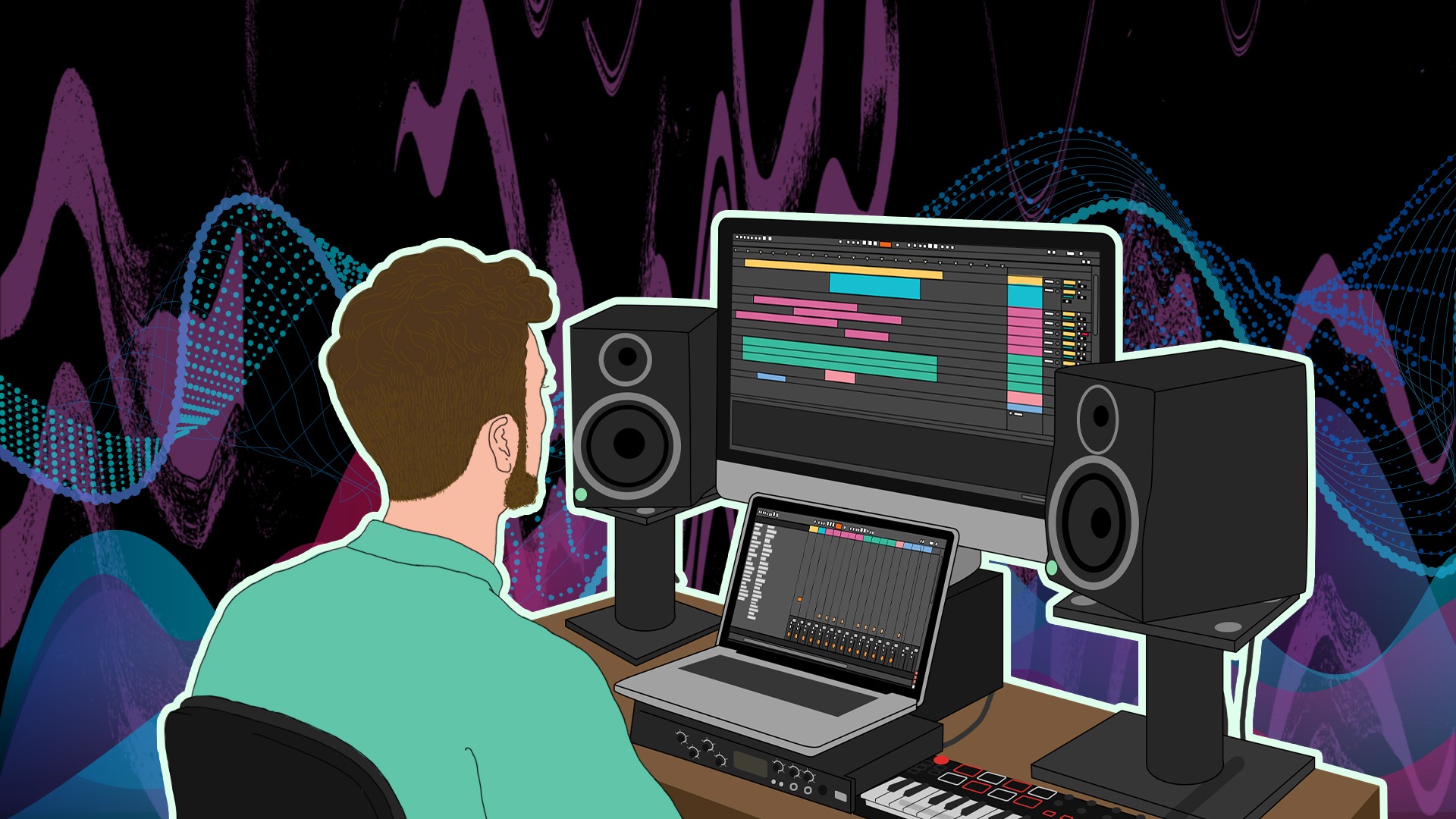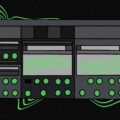At the end of 2022, RAC got the chance to chat with audio engineering expert Solomon Krause-Imlach about Studio Building 101: Acoustics. The Montreal musician and producer, who also works as a sound designer and podcast editor, turned out to be such an encyclopedia of knowledge that we had to pick his brain one last time.
For the final part of our interview, we took questions from RAC grads on the more electronic and technical components of working in a studio environment. From diving into all the different types of compressors and finding the right plugins, to getting the best bang for your buck on equipment and soldering replicas, Solomon Krause-Imlach has got you covered.
RAC: Hello again, Solomon! Last time we spoke, you shared great tips on setting up and maximizing your home studio space. Moving on to the more technical side, our RAC grads asked: why do you think there are so many different types of compressors (optical, VCA, FET, etc.)?
Solomon: There are different types of compressors for different applications, like various genres or instruments. It really depends on the source material and what you are trying to achieve, and certain ones have qualities that help you get a specific sound.
A VCA compressor is more modern and precisely controlled. There’s more variability in the settings you can tweak (threshold, ratio, attack etc.) An example of a VCA compressor that I use for mastering is the Shadow Hills mastering compressor.
A FET compressor is simpler and adds more “colour” or distortion, so it might have a more noticeable effect. The UREI 1176 is one of the most famous compressors of all time. You can use it on all types of things, but especially on drums or percussive sounds to add a bit of a punch.
Opto (optical) compressors aren’t as good for taming transients, so you would probably avoid them for mastering – a VCA is better for that. The opto is a bit slower, whereas you can make a VCA faster. An example of an opto I use is the White 2A by IK Multimedia, which is based on the famous LA-2A compressor.
RAC: What are compressors used for in mixing? When do you need several of them on a single track?
Solomon: Compressors are always used to control dynamics, but that can be done in different ways. For example, you may want to use a compressor that’s able to tame the intense transients in a vocal or guitar track, or a compressor to go on the drum bus, so that all of the drums gel together. Sometimes you don’t need a compressor at all! It’s easy to get carried away and use it on everything, so be intentional.
On a single track, you might want one compressor to tame sharp transients, and then a second one to smooth things out more softly. Another could be adding some nice colour.
It’s the same principle with mastering. Compressors might be doing different things: taming transients, gelling things together, and adding colour. I would say those are the 3 main things you’re getting out of compressors.
RAC: What’s your favourite compressor to mix with? What’s your favourite for mastering?
Solomon: I use the FabFilter Pro-C 2 on virtually everything – I believe it’s the most versatile you can get. It actually has the option to choose different types of compression and is customizable enough to use on all instruments, either for intense or gentle compression.
Another plugin I use sometimes for mixing is an optical tube compressor called the LA-2A. I use an emulation, the White 2A by IK Multimedia, which leads me to another useful tip: all of the famous hardware compressors now have companies producing software emulations (plugin versions). I like this opto compressor for smoothing mixes out – you can get a lot of volume out of it and really cranks things up without losing headroom (to avoid peaking and clipping).
Then for mastering, I use the FabFilter Pro-MB multiband compressor. I like it because for compression in mastering, you’re usually looking to compress different frequency ranges independently.
RAC: Can you give us an example of when equipment was malfunctioning and you needed to find a creative solution to deal with the issue?
Solomon: One time, my MIDI controller had some dead keys and wasn’t working properly. So I opened it up, took a pencil and rubbed a bit of graphite onto the connection, screwed it back together and voilà! The keys had been revived. This hack works because the graphite is conductive, so it helps revive the connections that aren’t working anymore.
I’ve also had issues with outputs on audio interfaces that I had to open up and clean out with some kind of contact cleaner. It’s good to know your way around your electronics and equipment to check if something needs cleaning or if a cable isn’t working.
Here’s a simple but very useful thing that everyone should know how to do: if something is not working, like you’re not getting a signal, you need to know how to go through and eliminate each piece of equipment to find where the problem is. Is it the mic or the cable? The basic idea of the process of elimination is vital. Switching out a cable or knowing how to test the different pieces of equipment to narrow down where the issue is coming from allows you to recognize when something is malfunctioning and what’s going on. Instead of panicking and getting overwhelmed, you can focus on the issue.
RAC: In terms of soldering replica equipment, how does the original cost compare to that of a modified custom?
Solomon: The Neumann U47 goes for around $6,000 in most stores – that’s maybe the most known high-end microphone for vocal recording. You could buy that, or you could find a DIY handmade kit of a clone for closer to $1,000. It cuts out the cost of manufacturing the equipment as well as the brand name – the components aren’t usually that unique to a brand, manufacturers are using pieces that are already out there and putting them together in a particular way. So if you feel like you want to dive into that kind of project, there are resources out there.
RAC: What are some common mistakes you see people make when buying equipment? Which mistakes might damage equipment over time?
Solomon: Spending too much money is a huge problem I see. People seem to think you need to get the most expensive equipment, or that pricier always equals better. But you’re trying to avoid diminishing returns – once you get past a certain threshold of spending, the value is going to start plateauing. For example, the difference between a $500 dollar mic and a $5,000 mic is not massive – the quality is not 10 times better, so it doesn’t make sense to pay 10 times more. Try to get the best bang for your buck.
Another mistake is spending money on the wrong things. It’s important to choose where it counts most, so maybe you don’t need a $1,000 gaming chair in your studio or cool RGB lighting right away. It would be more useful to invest in the basics, like a good microphone, speakers, cables, headphones, etc.
The main mistake in terms of damaging equipment is not knowing the proper chain of turning things on/off, like turning off an interface before turning off speakers. It can send a massive spike and damage your speakers. Knowing the correct order of powering up/down is an easy way to help preserve equipment.
RAC: Thank you Solomon for once again sitting down with RAC! Any big projects coming up that we should look out for in 2023?
Solomon: I’ve got quite a few things coming out this year! I’m working on an EP with Montreal drag musician BiG SiSSY, new songs with alt-popstar Maryze and a rap track with the great Backxwash (one of my own that she features on). On top of producing for other artists, I’m looking forward to making my own music again. When you work as a producer, you’re often working with and for other musicians, but in 2023 I’m excited to prioritize my own projects. I’ve been sitting on a lot of tracks and building up my library!
Check out Solomon Krause-Imlach’s website here
To submit questions to industry professionals on subjects you want to learn more about, please email: blog@recordingarts.com. We’ll do our best to incorporate helpful answers in future interviews and articles. You can also find us on Instagram @recordingarts.
Written by Maryse Bernard
Illustration by Yihong Guo





















